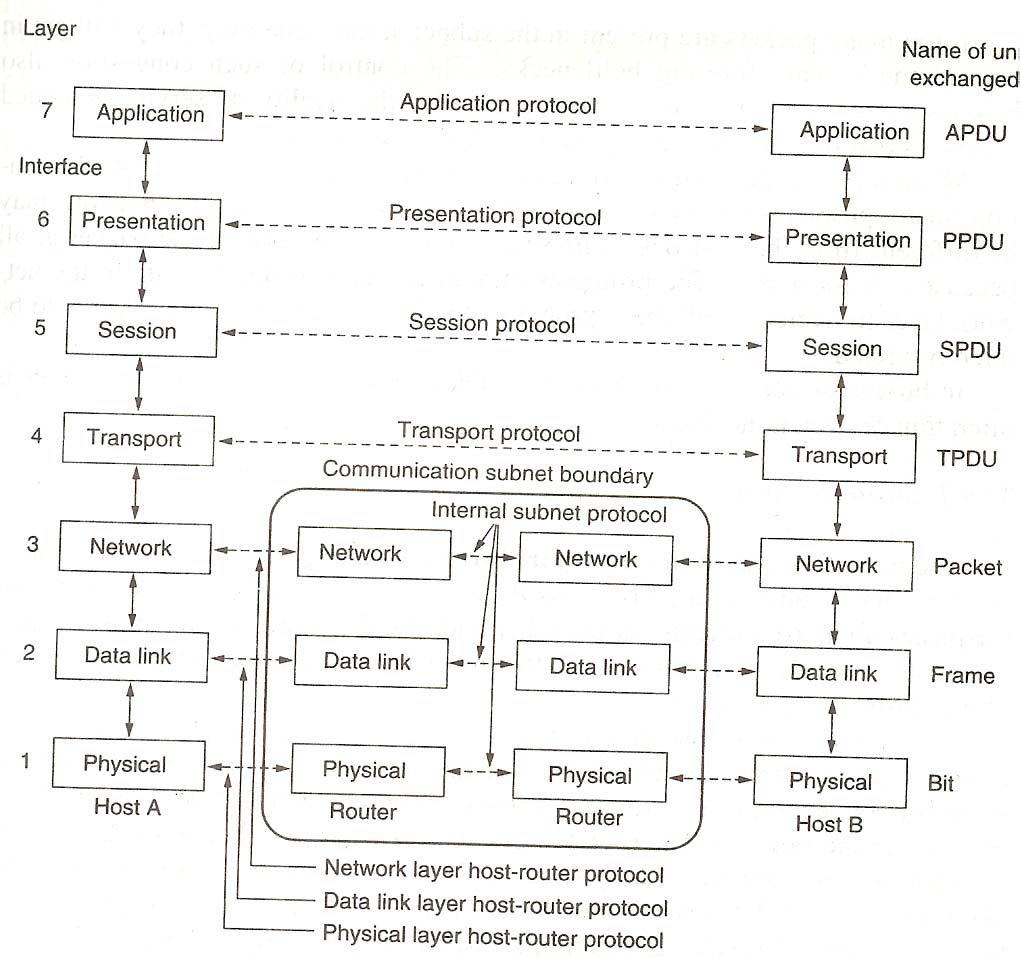The OSI Model
The OSI Model
The OSI model (minus the physical medium) is based on a proposal developed by the International Standards Organization (ISO) as a first step toward international standardization of the protocols used in the various layers (Day and Zimmermann, 1983). It was revised in 1995. The model is called the ISO OSI (Open Systems Interconnection) Reference Model because it deals with connecting open systems-that is, systems that are open for communication with other systems. We will just call it the OSI model for short.
The OSI model has seven layers. The principles that were applied to arrive at the seven layers can be briefly summarized as follows:
1. A layer should be created where a different abstraction is needed.
2. Each layer should perform a well-defined function.
3. The function of each layer should be chosen with an eye toward defining internationally standardized protocols.
4. The layer boundaries should be chosen to minimize the information flow across the interfaces.
5. The number of layers should be large enough that distinct functions need not be thrown together in the same layer out of necessity and small enough that the architecture does not become unwieldy.
This model has seven layers

Layers of OSI Model
Application Layer
This layer is responsible for providing interface to the application user. This layer encompasses protocols which directly interact with the user.
Presentation Layer
This layer defines how data in the native format of remote host should be presented in the native format of host.
Session Layer
This layer maintains sessions between remote hosts. For example, once user/password authentication is done, the remote host maintains this session for a while and does not ask for authentication again in that time span.
Transport Layer
This layer is responsible for end-to-end delivery between hosts.
Network Layer
This layer is responsible for address assignment and uniquely addressing hosts in a network.
Data Link Layer
This layer is responsible for reading and writing data from and onto the line. Link errors are detected at this layer.
Physical Layer
This layer defines the hardware, cabling, wiring, power output, pulse rate etc.
